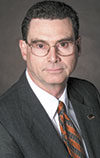Certainly that research has importance to many Southern Plains cattlemen in the summer of 2012.
As far back as 1963, researchers exposed bulls to temperatures of 104 degrees F and 54 percent humidity for an eight-hour period and then allowed the temperature to drop to 82 degrees with 72 percent humidity for the remainder of the 24-hour period.
This temperature regimen was continued for seven days and was designed to resemble natural conditions in the subtropics. They found the high temperatures resulted in major detrimental effects on initial sperm motility, sperm concentration and total numbers of sperm per ejaculate.
In 1978, Oklahoma scientists placed bulls in controlled environments of 95 degrees for eight hours and 87 degrees for the remaining 16 hours while similar bulls were placed in environments of 73 degrees constantly. These treatments were applied to the bulls for eight weeks and then all bulls were allowed to be in the 73 degrees environment for another eight weeks.
During the treatment, the heat stressed bulls had average rectal temperatures of 0.9 degrees higher than non-stressed bulls. The percentage of motile sperm cells decreased significantly in the stressed bulls by two weeks of heat stress. Sperm motility did not return to normal values until eight weeks after the end of the heat stress.
This explains some of the reduction in fertility that is often associated with summer and early fall breedings. One cannot escape the conclusion that high ambient temperatures can result in detrimental effects on fertility by effects on both the cow and the bull. ![]()
References omitted due to space but are available upon request.
—Oklahoma Cooperative Extension Service's Cow/Calf Corner newsletter, July 30, 2012
Glenn Selk
Emeritus Extension Animal Scientist
Oklahoma State University
PHOTO
Staff photo.








